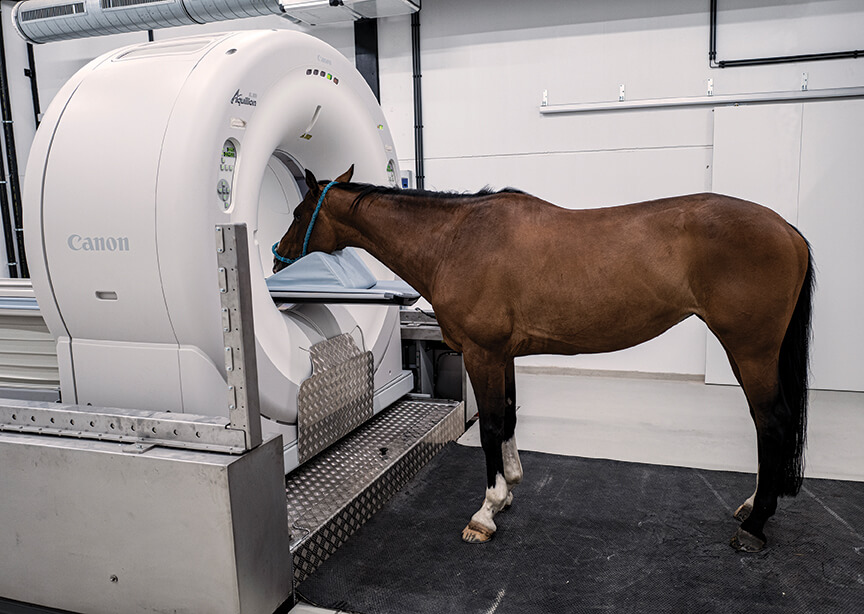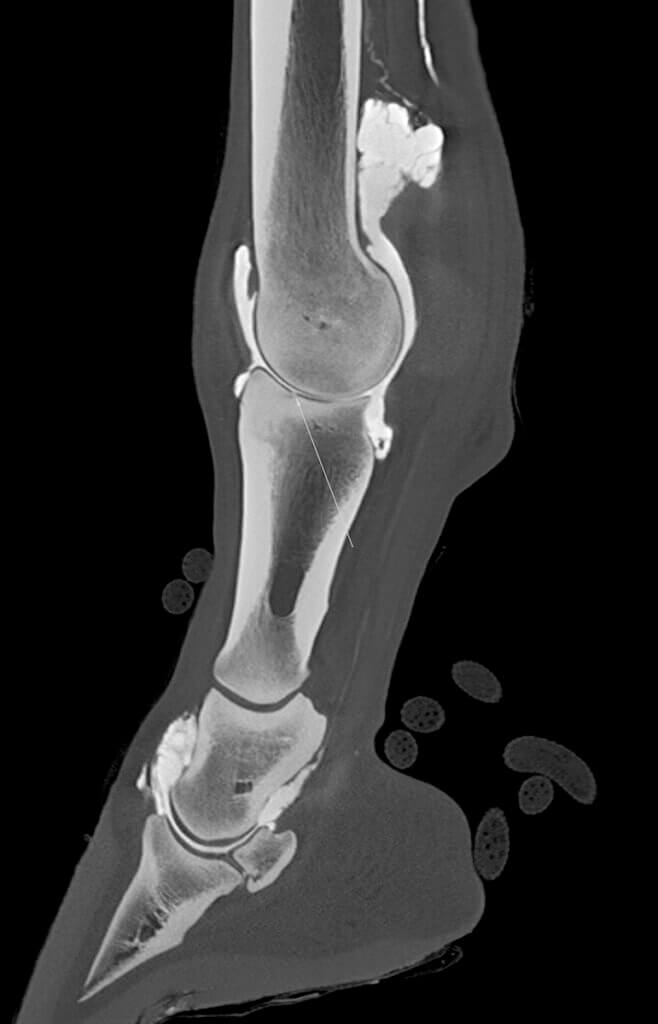

Equine athletes in Indiana now have access to the latest diagnostic imaging technology thanks to installation of the Qalibra Computed Tomography (CT) machine at the Caesars Entertainment Equine Specialty Hospital, a satellite facility of the Purdue University College of Veterinary Medicine located in Shelbyville, Ind. The helical (spiral) CT features the world’s largest field-of-view and can be adjusted in height according to the size of the horse, making it possible to scan patients while they are safely standing or under general anesthesia or light sedation.
Developed in Germany by equine specialists in conjunction with Canon Medical, the Qalibra CT system also will be installed in the new David and Bonnie Brunner Equine Hospital that is being built on the Purdue University campus with an anticipated opening in spring 2022. At that point, of the three known Qalibra CT installations in the United States, the College of Veterinary Medicine will have two of them.

Located near Indiana Grand Racing and Casino, the Caesars Entertainment Equine Specialty Hospital provides expert veterinary medical diagnostics and treatment for Indiana’s growing equine industry. Dr. Timm Gudehus, the hospital’s senior equine surgeon, explains the facility offers such specialized services as advanced equine surgery, including long-bone fracture repair; orthopedic examinations involving advanced diagnostic imaging, including nuclear scintigraphy (bone scan); other diagnostic services such as ultrasound and dynamic endoscopy; and treatments that incorporate a range of biologics and stem cell therapy.
